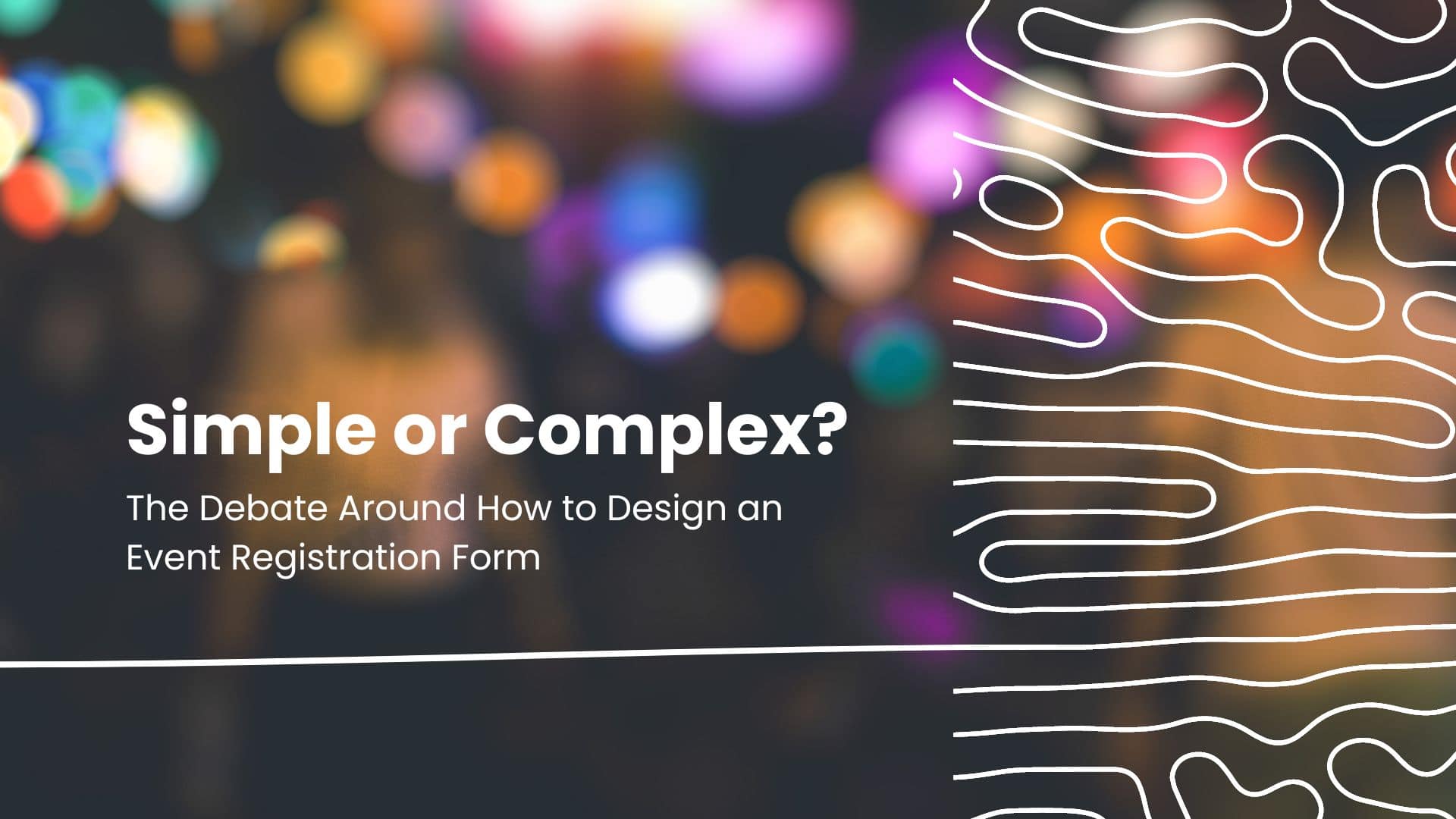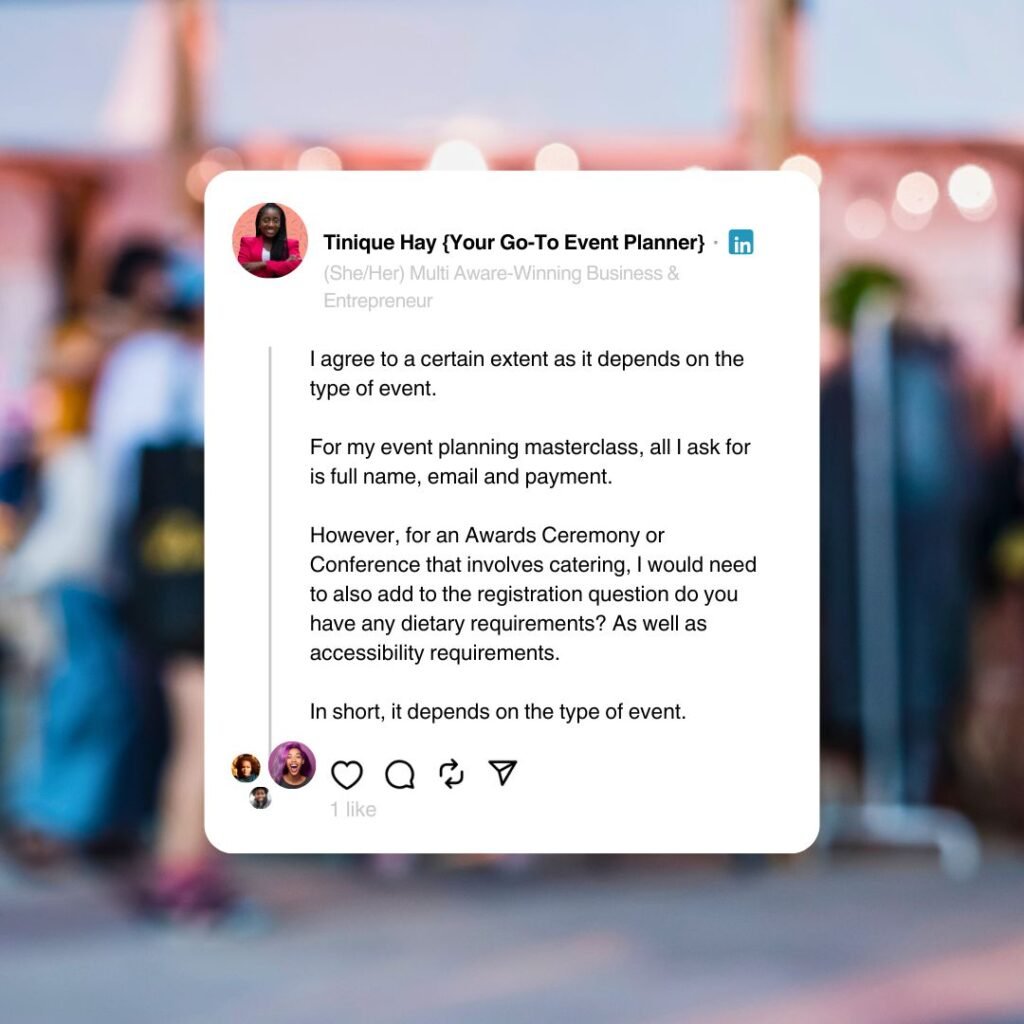Back to all posts
April 15, 2024

Handling event registration remains one of the most talked-about topics among event planners. Plenty of ink has been spilled on the continuing trend toward late registration from attendees and sponsors alike. The landscape of event software providers offering differing capabilities for designing an event registration process continues to expand and drive debates about who’s the best solution. And of course, for many planners the evergreen question remains - how do you encourage event registration, the essential fuel for achieving important event KPI metrics.
But yet another hot-button topic has emerged - the overly complex registration form. You don’t need to look far among event prof groups to see the strong opinions in the community:



Needless to say, not only are there clear preferences on both sides of the question, but also significant implications for various event stakeholders (the planner and/or their client, the venue, vendors, attendees, sponsors, et al) that are directly tied to the data collected as part of an event registration flow.
At RSVPify, we see plenty of examples of incredibly simple forms, and just as many users who create responsive registration forms with significant complexity, as well as requests for tools and features to support both. To help you make your own decision about what to include in a registration form (or just continue to change your mind like many event profs), we gathered some of the most compelling arguments we’ve seen for each side of the question - whether when you design a registration form, simple or complex registration is the way to go.
From classrooms to board meetings, it’s no secret that smartphones, social media, and more have made it harder to maintain audience attention than ever before. If people have a hard time stopping to watch videos in their social feeds, we can’t expect a multi-page and multi-field registration form to do any better. Quick and simple registration forms can get as many attendees onto email lists for follow-up communications and limit drop-off.
No matter how important your event data may be for both planning or monetization purposes, with registration processes often beginning months in advance of an event, you should have ample time and tools to collect all the info you need. An initial form that gathers contact info and attendance plans allows you to begin building the all-important headcount for venue and vendor selection, while also providing the email list you can use for future data collection.
As attendees become more selective about the events they attend, and more events proliferate as the industry fully recovers from the pandemic era, building excitement and anticipation is essential for driving attendance and making an event successful. Most would agree that filling out forms is not a way to do this. By creating a simplified registration form and instead devoting time to branding and design, or space for promos or teasers about the event (speakers, sessions, surprises), you can differentiate your event and increase attendance. Build the hype first, and collect the info later.
Sure, you can’t push everything to the actual day of the event, or you’ll be living an event planner nightmare. But auditing the data collection that can be done as attendees arrive (either by event staff or via self check-in kiosks) can also make last-minute attendees less of a burden than they already will be for event planning staff. If people aren’t going to give you this info until the day of anyway, why make the experience more frustrating for the early birds who you should be rewarding for making planning easier?
Time to look at the other side of the coin. With so many late registrants, late vendor or exhibitor contracts, and delayed vendor and venue decisions thanks to both, frontloading data collection to better curate attendee experiences and optimize your planning can at least reduce some of the logistical headaches. By being smart about what you truly need from attendees, you can create a more detailed registration form that doesn’t drive attendees away, but also reduces the amount of last-minute details to sift through for beleaguered event staff. For those considering setting up pre-registration for an event, this is perhaps the strongest argument for doing so.
As noted above, the event landscape continues to get ever more crowded, and attendees are looking for something memorable. That’s where a personal touch (unique messaging upon check-in, custom swag bags, detailed schedule and venue maps for each attendee, etc.) can help set an event experience apart. Of course, you can’t provide this level of personalization without info from your attendees, and lead time to create these personal experiences. Getting all that info as part of the initial registration process can streamline it. Similarly, it can help you to drive event registration at future events by creating positive brand associations for recurring or annual events.
For both planners and clients, there are few things worse than having guests suffer physical issues from either food offerings or limitations of a physical space. Not only is it a bad experience for the guest themselves, but these types of problems tend to reflect badly on everyone involved in planning the event - bad press and word-of-mouth that no event professional wants. Working these questions into the initial registration form can ensure that no guest’s requirements are missed from not seeing future emails or forms in crowded inboxes weeks after registering.
While seasoned event planners often have systems built from years of experiences (including negative ones), newer event planners might not know exactly what will lead to the type of devastating cost overruns or logistical nightmares that can truly damage their reputation. If it’s the first time hosting a major event or planning with a major client (like a Fortune 500 company), losing a few registrants in exchange for having a better planning picture earlier and avoiding disaster during event check-in in is a smart tradeoff.
About the Author
Adam Hausman co-founded RSVPify in 2013 and has been passionate about event tech and ticketing software ever since. Also founder of Greenlight Growth Marketing, he holds degrees from Indiana University (BA English/Psychology 2008) and the University of Illinois-Chicago (M.Ed. Secondary Education 2012). He lives in Maine with his wife, 2 kids, and 2 annoying cats.
Get the latest product updates, event planning tips, and industry insights — straight to your inbox.
You can unsubscribe at any time. Your email will only be used to send RSVPify updates and will never be shared.
